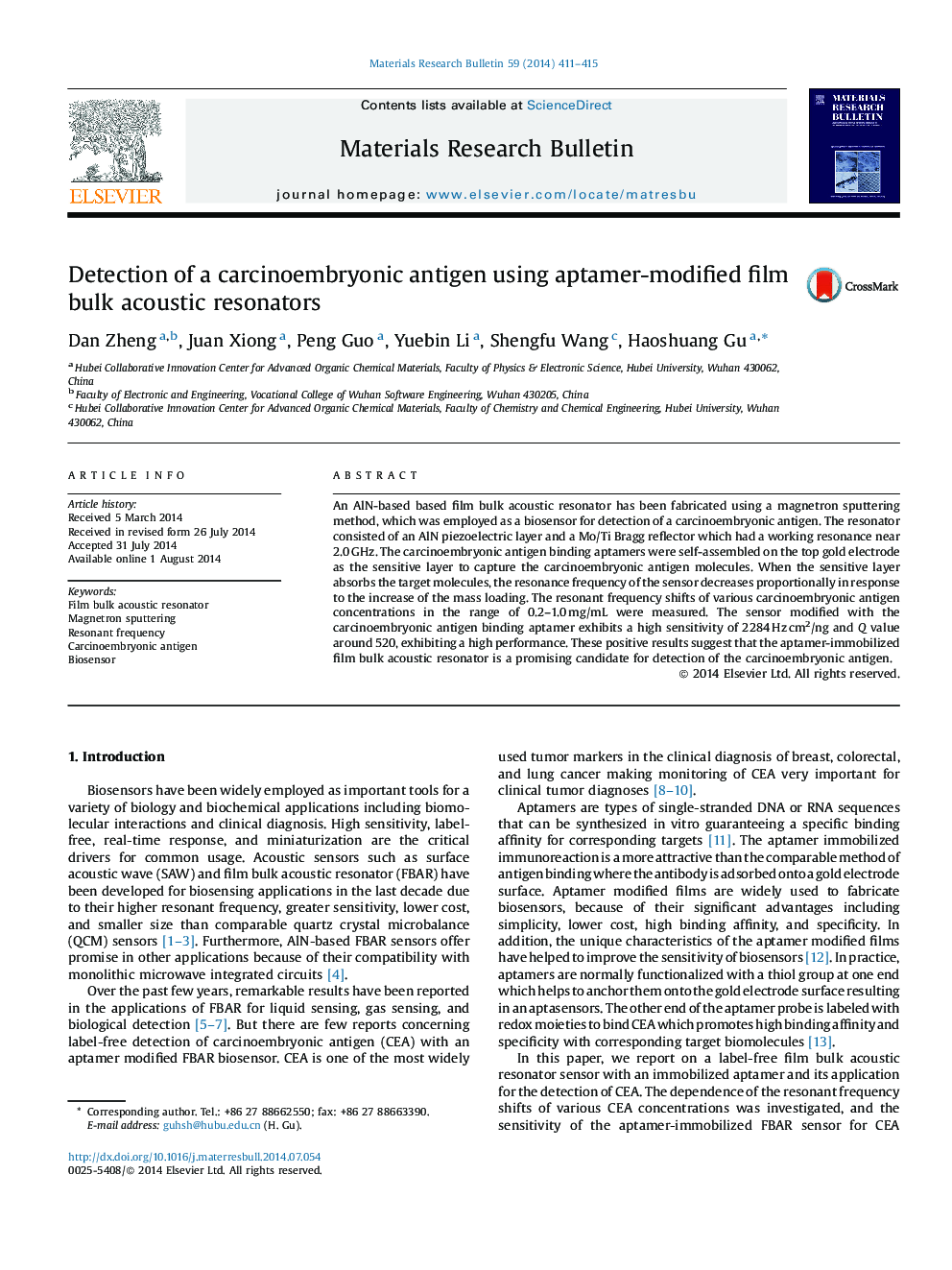| Article ID | Journal | Published Year | Pages | File Type |
|---|---|---|---|---|
| 1488050 | Materials Research Bulletin | 2014 | 5 Pages |
•AlN-based film bulk acoustic resonator (FBAR) has been fabricated and modified by carcinoembryonic antigen (CEA) binding aptamers.•We have researched the structure and properties of the modified FBAR.•The dependence of the resonant frequency shifts and return loss on various CEA concentrations was investigated.•The modified device exhibits a high sensitivity, Q value, and selectivity.
An AlN-based based film bulk acoustic resonator has been fabricated using a magnetron sputtering method, which was employed as a biosensor for detection of a carcinoembryonic antigen. The resonator consisted of an AlN piezoelectric layer and a Mo/Ti Bragg reflector which had a working resonance near 2.0 GHz. The carcinoembryonic antigen binding aptamers were self-assembled on the top gold electrode as the sensitive layer to capture the carcinoembryonic antigen molecules. When the sensitive layer absorbs the target molecules, the resonance frequency of the sensor decreases proportionally in response to the increase of the mass loading. The resonant frequency shifts of various carcinoembryonic antigen concentrations in the range of 0.2–1.0 mg/mL were measured. The sensor modified with the carcinoembryonic antigen binding aptamer exhibits a high sensitivity of 2284 Hz cm2/ng and Q value around 520, exhibiting a high performance. These positive results suggest that the aptamer-immobilized film bulk acoustic resonator is a promising candidate for detection of the carcinoembryonic antigen.
Graphical abstractFigure optionsDownload full-size imageDownload as PowerPoint slide
